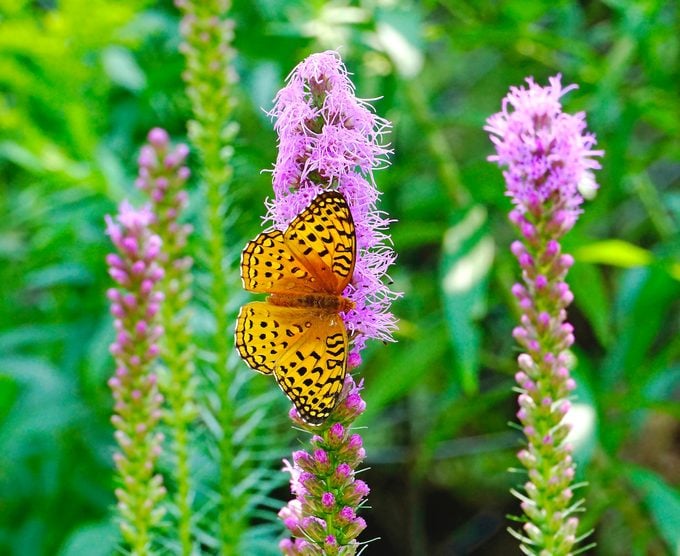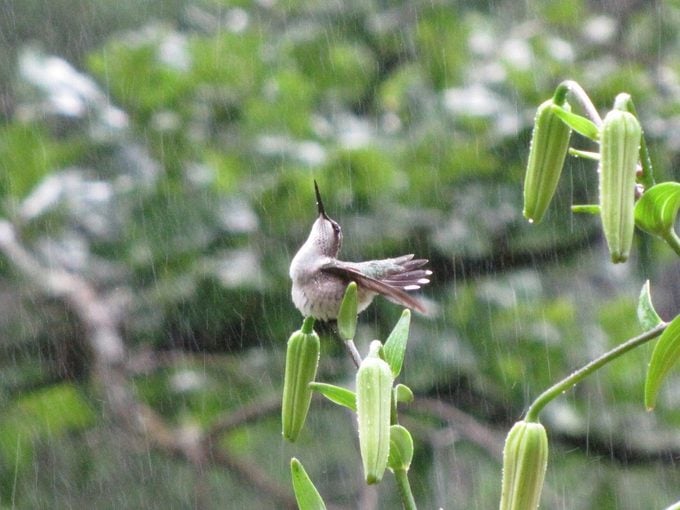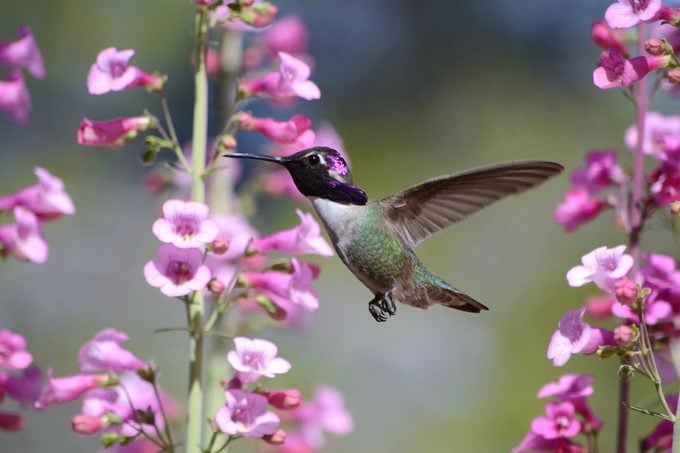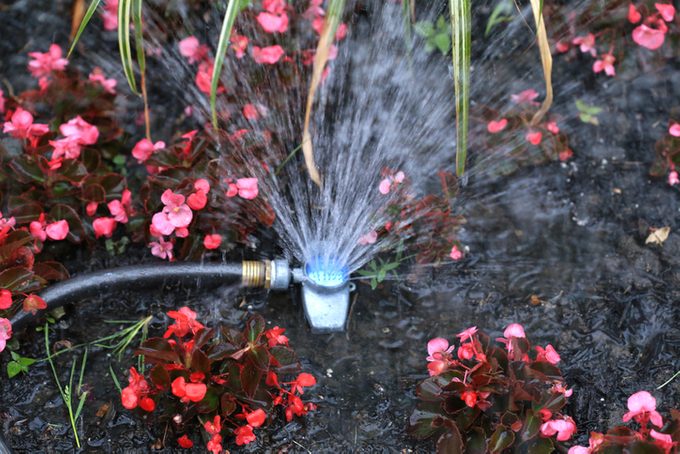Expert Tips for Growing a Drought Tolerant Garden
Updated: Dec. 20, 2022
You can still have a gorgeous garden even when rainfall is scarce. Follow these tips to grow a drought tolerant garden that can handle any weather.
Planning a Drought Tolerant Garden

“How’s the weather?” That might seem like simple chitchat to most people, but to a gardener it’s the start of a serious discussion. After all, our beloved flowers are at the mercy of the skies. And every summer, we seem to be faced with extra-hot, extra-dry conditions that can wreak havoc on our plants. Luckily, though, there’s a wonderful range of adaptable drought tolerant garden plants to try.
Be sure to check out our top picks for drought-tolerant plants.
What is a Drought?
Before we get to the plants, let’s first look at drought. Usually dry spells are normal, because weather is variable. But when they continue week after week, month after month or even year after year, it depletes every bit of moisture in the soil. In short, you’re dealing with a drought. Follow these tips to conserve water in the garden.
At this point, watering becomes an endless and expensive chore. Even worse, you might not be able to water at all if you live in a municipality that has drought restrictions. So what’s a gardener to do?
Add plants! Well, this isn’t quite as simple as it sounds. Sure, a drought mimics desert conditions, but in this case it’s a temporary desert. Most of us need plants that can thrive in both drought conditions and wetter environments, too.
This is why you can’t just plant a bunch of cacti or agave. When the rain returns, their roots won’t be able to draw up the extra water fast enough, and they may literally drown. The key is to have a drought tolerant garden that can handle both: Plants that can shrug off drought, yet appreciate ample rainfall.
Learn how to plant a rain garden and how to transplant and grow agave pups.
The Best Time to Plant a Drought Tolerant Garden
When’s the best time to start drought-proofing your garden? Right now! Ideally, you want to get plants in the ground well before a dry spell hits. So there’s no time like the present to hit the garden center and start adding drought tolerant garden plants to your yard.
Don’t expect them to work magic right away, though. Even the least thirsty plants in the world need moisture to get their roots established. Expect to water your new perennials for a full year, while they grow the roots they need to weather a drought without skipping a beat.
When is the best time to water plants?
What Is Normal Precipitation in Your Region?

You probably have a good idea of what a normal amount of annual precipitation is like in your area. But many years aren’t exactly normal. Besides, the precipitation report doesn’t begin to tell the full story. In my neck of the woods, on the dry side of the Rockies, annual precipitation is almost entirely snow. Come the growing season, the sky shuts off like a faucet. Week after week can go by with nary a drizzle, or at most a tease that barely wets the soil. It’s a similar story in the Pacific Northwest, where winter is the infamous rainy season, followed by a long, lovely and usually dry summer.
Other parts of the country have a more balanced picture, with water falling year round as winter snow and summer rain. Still, no matter what the usual cycle of precipitation is where you live, Mother Nature has a habit of throwing a monkey wrench into the works. So it’s best to act like a Boy Scout and be prepared.
Check out the top 10 water wise plants that will thrive in a dry spell.
Plant Leaves Tell the Truth About Moisture Needs
Below ground, roots help a plant get through dry times. Taproots go deep, as do the fibrous roots of many prairie plants, so they’re able to draw up moisture even when the top foot of soil is bone dry.
Still, if a plant has big leaves or lots of smaller ones, even a very deep root will have trouble supporting the needs of the top growth. Hollyhocks, for instance, wilt very quickly in a drought, as do tomatoes.
So instead of examining the roots, take a look at the leaves, which are the main source of water loss. Sun and wind, plus the normal process of transpiration through which plants breathe, cause water to evaporate. Roots are constantly working to pull moisture from the soil to replenish that supply.
Drought-tolerant plants have all sorts of defenses to prevent water from being lost through their leaves. That’s why leaves are the No. 1 clue to how well plants will survive a scarcity of water.
Big green leaves, lush foliage? Times will probably be tough when drought sets in. Small leaves and fewer of them? There’s much less water needed overall. What about leaves with a coating of fuzz or a waxy layer? These are great adaptations to prevent water loss.
Drought-tolerant blackfoot daisy can take the heat.
How to Find Drought Tolerant Garden Plants

Both the garden center and a local native plants group are good places to find drought-resistant flowers and plants for your area. Psst—hummingbirds love drought tolerant penstemon.
It can take time to switch your plants over to drought-resilient varieties, but it’s a good thing to keep in mind when adding new perennials to your garden. And it’s a good goal to have in general. After all, if you get the right plants in place now, your garden will look glorious no matter how stingy nature is with water.
Learn how to grow a drought tolerant rosemary shrub.
Top 10 Drought Tolerant Garden Tips

- Choose the right site. Even sun lovers need a little relief, especially at midday. So avoid growing them in a full sun, especially on south-facing exposures. Part-day shade minimizes stress and also preserves flower color longer.
- While you can’t turn down the heat, you can change the soil. Dig in plenty of organic matter prior to planting. This improves the soil’s texture, fertility and ability to retain any moisture. Plus, the soil stays cooler.
- An inch or two of mulch can make a world of difference. Organic mulch will hold moisture, keep plant roots cool and improve the soil as it breaks down.
- Group plants with similar moisture needs in the same area. This cuts down on the special trips you’ll need to make to water just one or two plants.
- One of the best ways to prevent drought stress is proper watering. Instead of giving your plants frequent, shallow waterings, water less often and more deeply. Let a soaker hose give plants a good drink, or use a sprinkler at a low setting. Always water plants at ground level so the moisture goes to the roots.
- Try desert and dry-meadow natives and plants that survive at high altitudes. These plants survive nicely in the wild, without human help, so they’re sure to survive in your backyard. Young plants from native nurseries may start out as ugly ducklings but, once established, provide beauty with little care.
- Hot, dry weather is the worst possible time to fertilize your flower garden. This is because plant roots respond to the difficult conditions by slowing or shutting down. The nitrates in plant foods will only injure them in this dormant state.
- Experiment with plant placement if you live in the South. The light may be intense enough for you to grow even sun-loving plants in the shade.
- Many spring-flowering bulbs will survive in hot, dry locations, since the most extreme weather hits after they’ve already flowered. Mulch or cover them with other plants to keep them safe and cool.
- Many ornamental grasses are prairie natives, so they’re well suited to hot, dry conditions. Look for ones native to your area.
Next, check out 5 drought tolerant shrubs for your garden.
